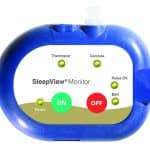Summary: When Beckey Carstens’ boyfriend mistakenly gave their dog Nellie an Ambien, it led to a frantic call to the vet, emergency treatment at Urgent Pet Care, and a warning from experts about the dangers of storing pet and human medications together.
Key Takeaways:
- Never Store Pet and Human Medications Together. Mixing them up can lead to dangerous or even fatal consequences for pets.
- Emergency Treatment Can Be Costly. Nellie’s treatment cost over $1,200, highlighting the importance of financial preparedness.
- Keep Pets Away When Taking Medications. Pills can fall on the floor and be accidentally ingested by animals.
When Beckey Carstens came home and found that her boyfriend had accidentally given their dog Nellie an Ambien, rather than her prescribed medication for a urinary tract infection (UTI), panic set in.
Nellie, a playful pooch from Omaha, found out the hard way that people should never keep their pet’s medication in the same area as human medications. They can get mixed up and have potentially deadly consequences.
“I take a man’s amount of Ambien,” Carstens says in a release. “I needed a refill, so I set the nearly empty bottle on the counter next to our dogs’ pills. I had asked my boyfriend to give our dog his medication while I was out, but when I came home, he told me he had medicated both dogs. I knew that was impossible because we were out of Nellie’s UTI medication. I realized he had given Nellie one of my Ambien rather than her UTI pill. When we figured out what had happened, I called my veterinarian immediately. They then had me call Pet Poison Helpline.”
Carstens has prescriptions for her dogs from two different veterinary facilities. As it turned out, the bottle from one hospital was brown, while the others from where Nellie received her prescription were blue. The Ambien prescription also came in a brown bottle.
“I hadn’t really noticed that the bottles were different, but when he told me he had given both dogs their medication, I instantly knew something was wrong,” Carstens says. “Because my Ambien bottle was also brown, he assumed that it was her medication because it was with our other dog’s pill bottle.”
Senior veterinary toxicologist Renee Schmid, DVM, DABT, DABVT, says pet medications should never be kept alongside human medications. “In fact, if you have multiple pets, you should also store their medications separately, as it is very easy to mix up bottles and severe effects may occur if unnecessary medication is given,” says Schmid, who is director of Veterinary Medicine at Pet Poison Helpline. “Also, never give your pets their medications together, as you might drop a pill, and the other animal will beat you to it! Finally, make sure your pets aren’t around when you take your own medication, as that could also fall on the floor and become a deadly ‘treat.’”
Once Carstens arrived at Urgent Pet Care in Omaha, Nebraska, she gave the medical team Nellie’s Pet Poison Helpline case number, which allowed their medical team to call back and start developing a treatment plan together.
With Nellie’s exposure, the toxicology experts were concerned with blood pressure changes, severe neurologic depression or agitation, and an increase in heart rate. The medical team at Urgent Pet Care induced vomiting, administered activated charcoal to absorb the toxin, and placed her on intraveneous fluids. She was monitored closely overnight and provided supportive care.
‘Nellie’s doing great now, but it was a scary and expensive process,” Carstens says, who added that Embrace Pet Insurance paid 90% of the bill, which was over $1,200.
Ricky Walther, DVM, chief medical officer at Pawlicy Advisor, a pet insurance comparison and education platform, says in a release, “Pet Poison Helpline and pet insurance make for a good combination.”








